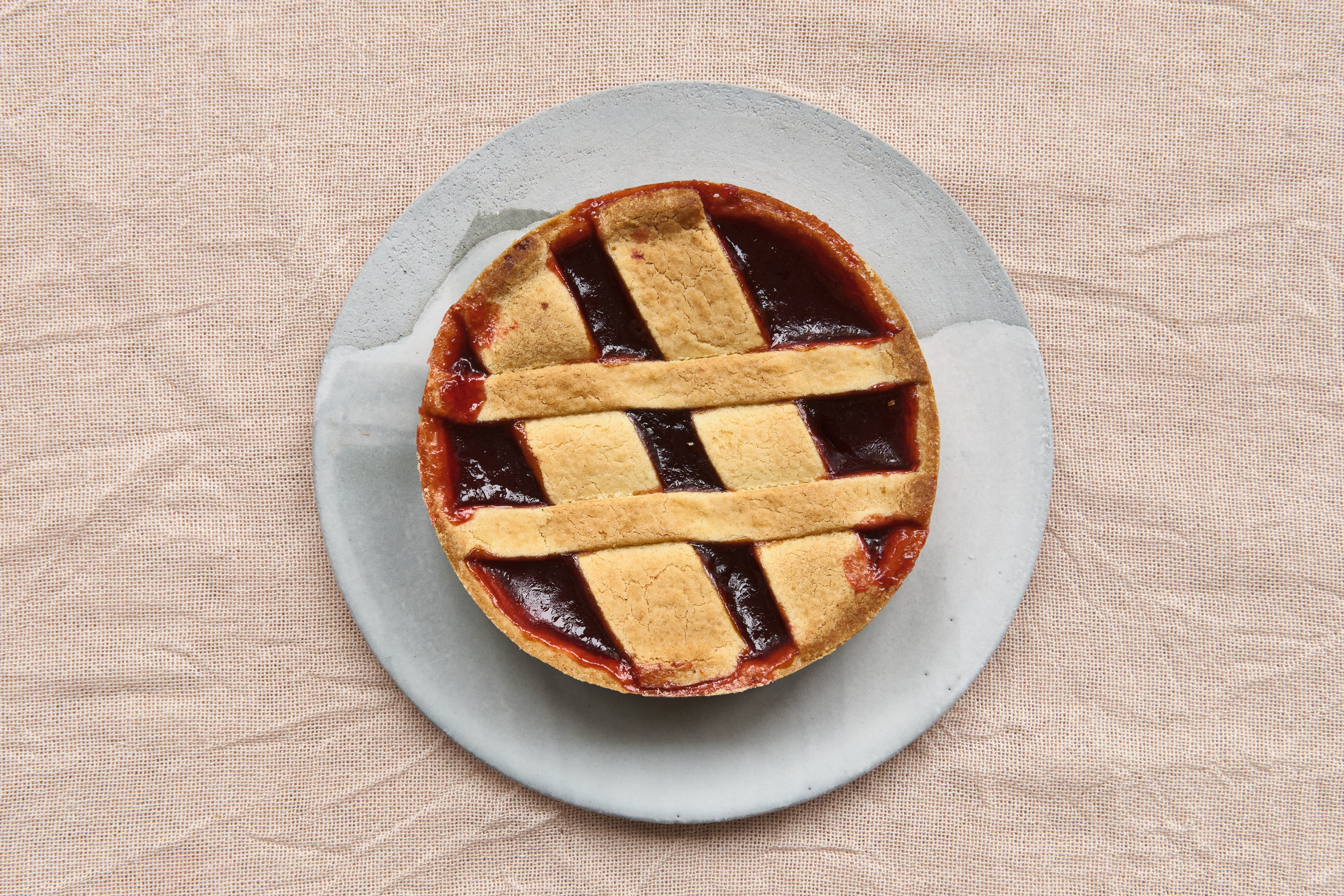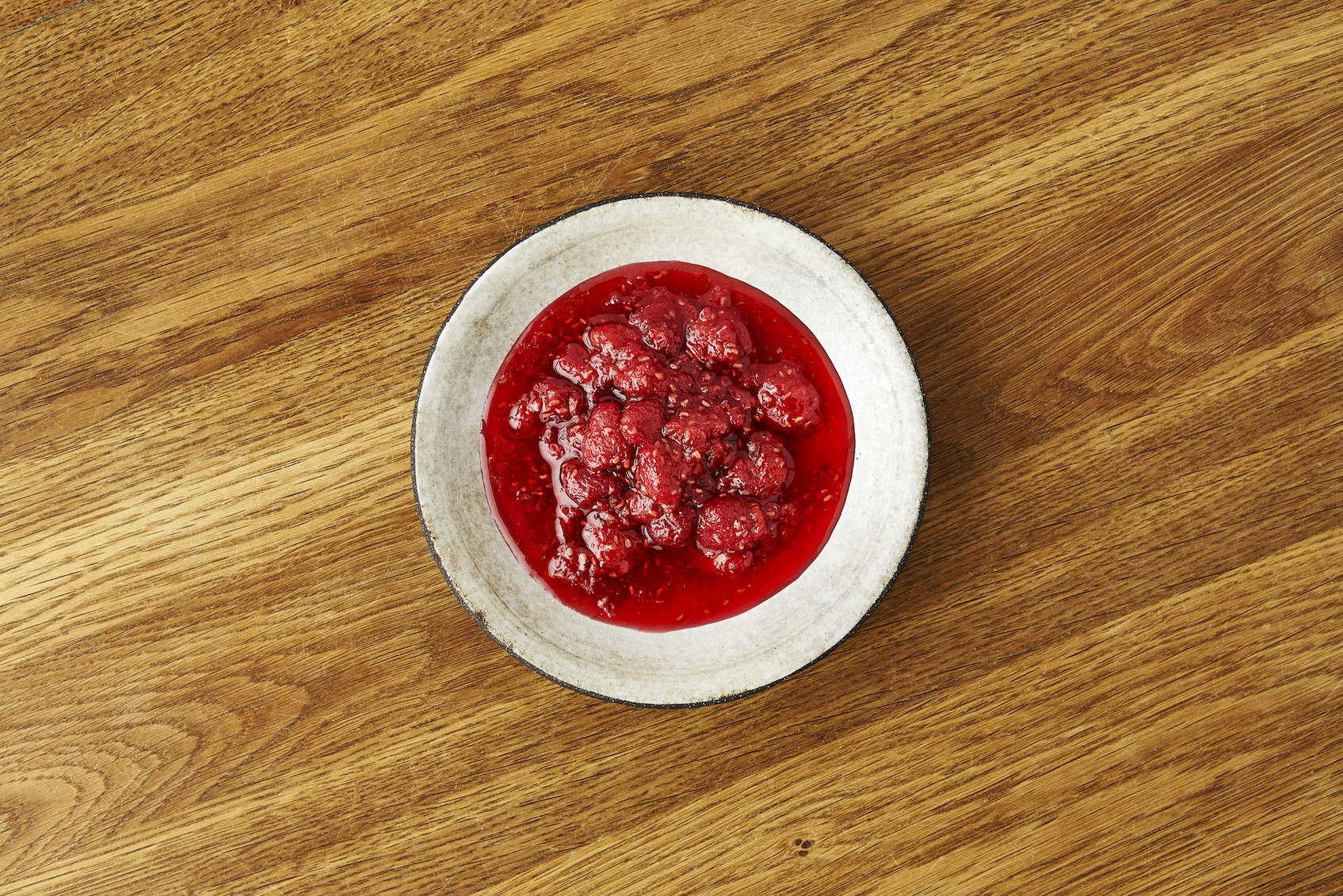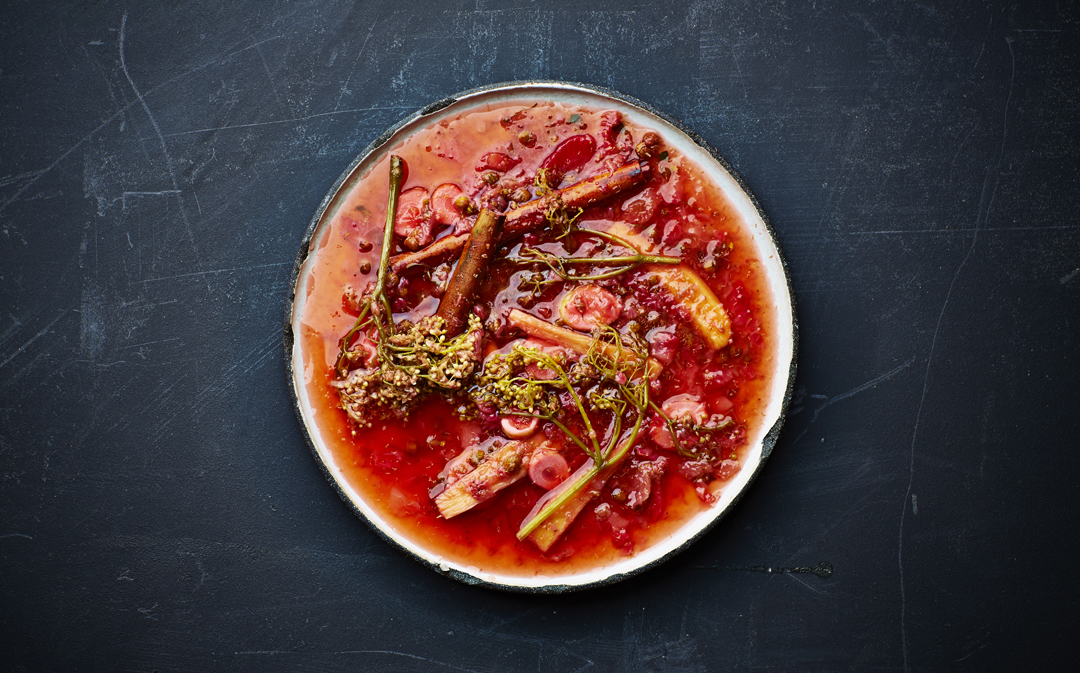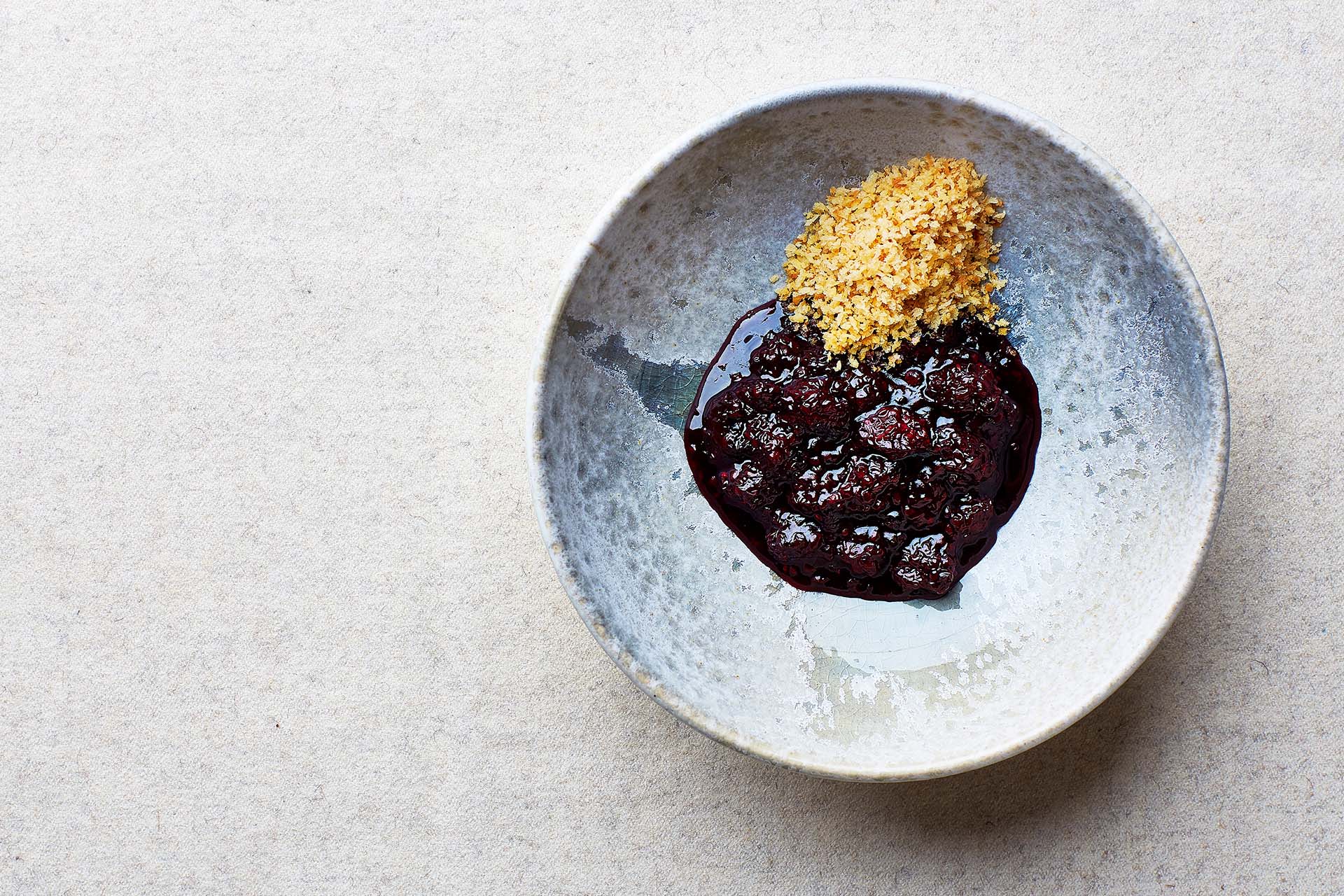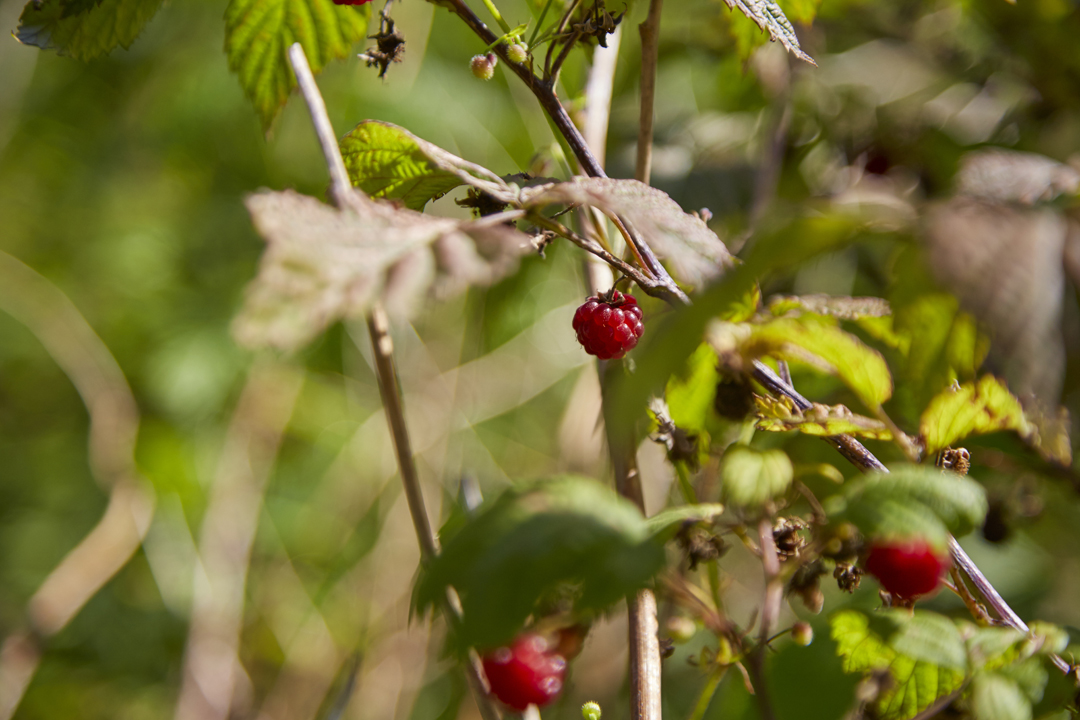
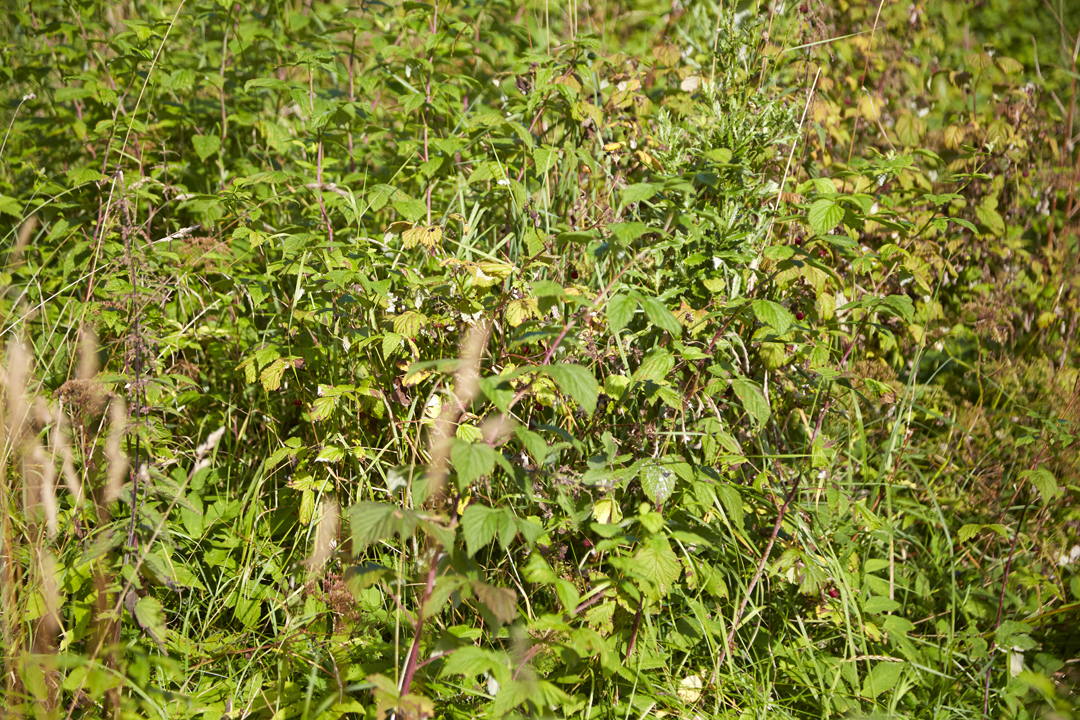
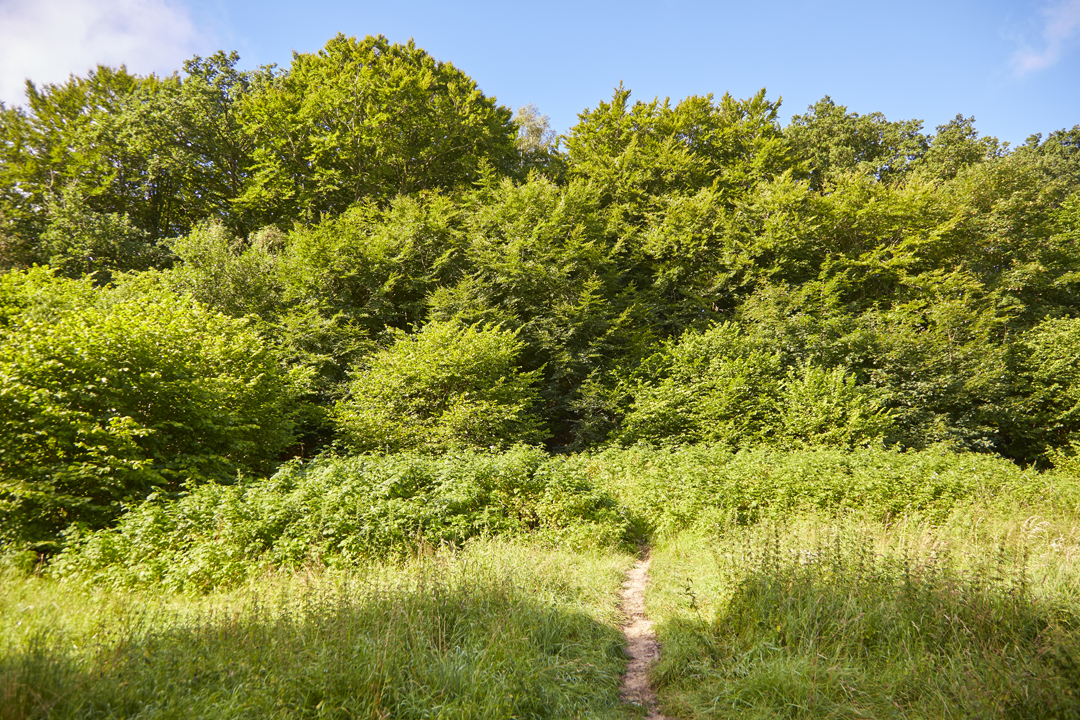
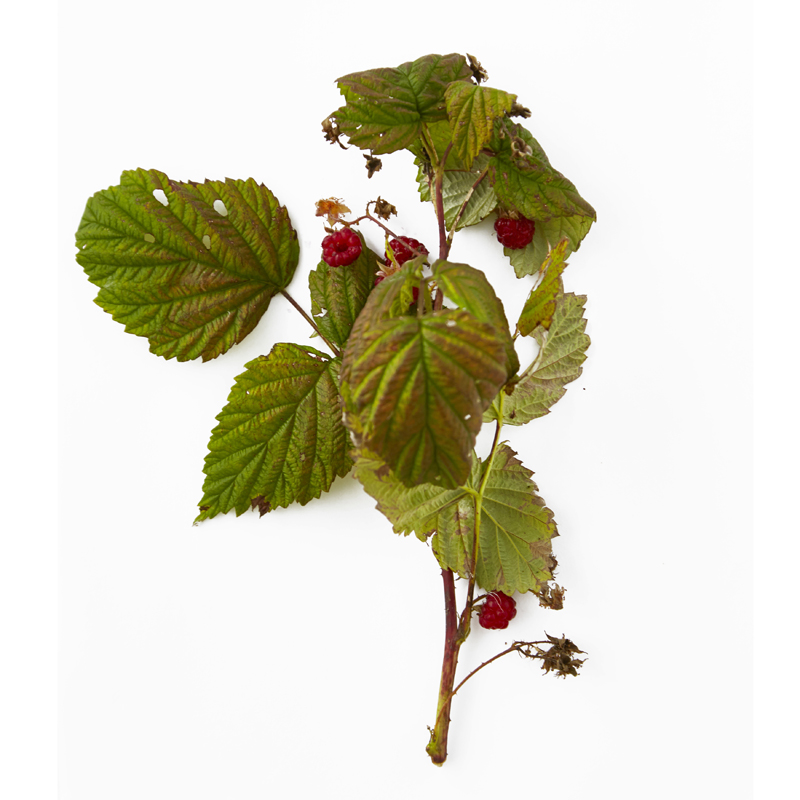
Raspberry
Raspberries are one of the heroes of midsummer. During the period when many herbs lose their appeal, and before it's time to harvest fall fruit and berries, raspberries are the wildest delicacy.
-
Where to Find It
You can find raspberries in most parts of Denmark, where they often grow in large thickets. A hardy plant, raspberries fare best in areas with moisture and rich soil, such as hedges, copses, and deciduous forests where there's plenty of water in the ground and lots of leaves that can turn to humus. They also need sunlight, so look for them along paths, in clearings, or around the edges of shrubs. If left to grow unchecked, they can quickly take over entire areas.
Deciduous forests, hedges, roadsides.
-
When to Find it
You can pick raspberries in July and August.
Berries: July, August.
-
How to Spot It
Wild raspberry bushes can be dense and twisted or more light and fragile. The older shoots are woody with small thorns, while new shoots are fresh and green with small, soft thorns that grow close together, almost like hair. The oval leaves, which are dark green on the surface and silver-green underneath, become lined with distinct ribs as they grow. The flowers are small and white and the berries are red (sometimes yellow).
-
How to Pick It
Remember to put on a good pair of gloves and clothing that covers you well when you pick raspberries, or you’ll likely end up with lots of scratches on your arms and legs. Raspberries ripen quickly and will easily become mushy, so bring a couple of small buckets, rather than one large one to prevent crushing. You can always use the soft ones for marmalade though.
Risk of misidentifying the plant
There is no risk of mistaking the plant for another dangerous or undesirable plant. Raspberries are, however, in the same family as dewberries and blackberries, and can sometimes be mistaken for one another.


